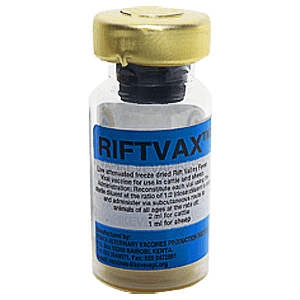Rift Valley Fever (RVF) is a viral disease primarily affecting livestock, although it can also infect humans. Transmitted mainly by mosquitoes, the disease leads to significant economic losses in the agricultural sector, particularly among cattle, sheep, goats, and camels. In animals, RVF can cause high mortality rates, abortions in pregnant females, and a decline in milk production, which severely impacts farming communities.
In humans, the disease often presents mild flu-like symptoms, but in some cases, it can develop into more severe conditions, including eye disorders, meningoencephalitis (inflammation of the brain), and hemorrhagic fever, with a fatality rate of around 1%. The most common mode of human infection is through direct contact with the blood or organs of infected animals, such as during slaughtering or veterinary work. Though mosquito bites can also transmit the virus, this is less frequent.
The virus primarily spreads through mosquito species such as Aedes, Culex, Anopheles, and Mansonia, which become infected when they feed on animals carrying the virus. In certain cases, the virus can survive in mosquitoes’ eggs, enabling vertical transmission and environmental persistence.
Outbreaks of RVF are often linked to environmental conditions, particularly heavy rainfall, which creates favorable breeding grounds for mosquitoes. In East Africa, the disease tends to flare up after periods of intense rainfall, often exacerbated by climate phenomena such as El Niño. The spread of RVF into regions like the Sahel is also influenced by the movement of infected livestock, which can carry the virus across borders.
There is no specific treatment for severe RVF in humans, and prevention focuses on controlling mosquito populations and minimizing human exposure to infected animals. Surveillance systems that monitor animal health are essential, and in cases of outbreaks, culling of infected animals is a common control measure. Vaccines for animals are available, and vaccination campaigns in endemic regions can prevent outbreaks. However, there is no licensed vaccine for humans yet, though an inactivated version has been developed and used experimentally.
Preventive measures for humans include avoiding contact with sick animals, using mosquito repellents, and consuming well-cooked animal products. Public health awareness is crucial to reducing risks, especially in communities most vulnerable to the disease, such as farmers and veterinary workers.
In summary, while Rift Valley Fever poses a significant threat to both livestock and human health, effective management through surveillance, vaccination, and preventive practices can help control its spread and reduce its impact.

